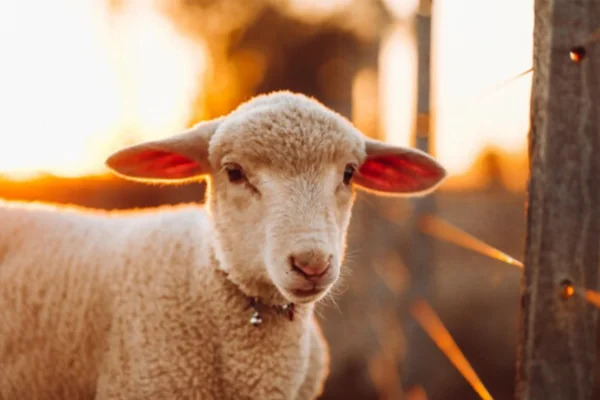Sheep Diseases - Symptoms, Diagnosis and Treatment
Introduction
Sheep farming plays an essential role in the economy of many regions of the world, providing meat, wool and other products. However, sheep farming is not without its challenges, one of which is susceptibility to various diseases.
This article will look at the main diseases in sheep, covering various areas from hoof diseases to worms, in order to provide valuable information for breeders and animal health professionals.
Main Diseases in Sheep
-
Hoof Diseases in Sheep
Hoof diseases in sheep are health problems that are often related to inadequate management practices, such as excessive hoof trimming, castration and the use of contaminated materials in tail docking. A common symptom of these diseases is lameness. The use of footbaths and local disinfection are often the most effective approaches to treating these diseases.
Contents
-
Symptomatic Carbuncle (Lameness)
Symptomatic anthrax, also known as lameness, affects sheep aged between 6 months and 3 years and is caused by the bacterium Clostridium chauvei. Symptoms include depression, fever and obvious lameness, with noticeable swelling in the hind legs. Once contracted, this disease has no cure, and death occurs quickly, usually within 12 to 26 hours.
-
Pododermatitis (Hoof Rot or Foot Rot)
Pododermatitis, also called hoof rot or foot rot, is a contagious disease caused by the combined action of several bacteria present in the soil. These bacteria invade and multiply in sheep's hooves, especially when they are overgrown or covered in feces or mud. The main symptoms include lameness and reduced appetite. In severe cases, the disease can lead to deep necrosis of the hoof, associated with an unpleasant odor.
-
Laminitis
Laminitis is an inflammatory process that affects the laminae, the sensitive structures of the sheep's hooves. This results in lameness and permanent deformation of the hoof. Laminitis often occurs as a consequence of ruminal acidosis, which decreases blood flow to the hoof blades.
-
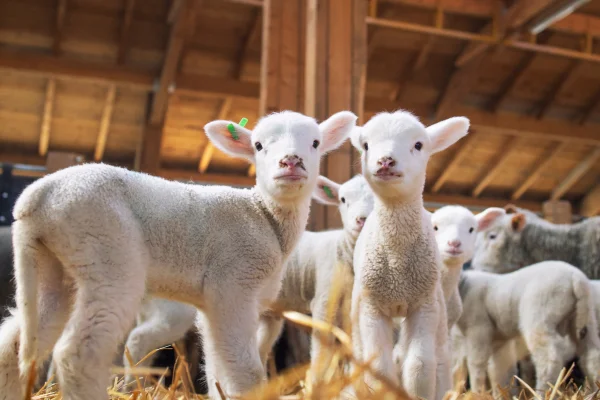
Skin Affections, Coats and Ectoparasites in Sheep
Skin, coat and ectoparasite infestations in sheep are health concerns that are often reflected in symptoms such as loss of appetite, dermatitis (inflammation of the dermis), skin lesions with or without loss of wool, wounds, ulcers, scabs, scales and, above all, itching, pain, discomfort and restlessness. Within this group of diseases, the following stand out:
-
Dermatomycosis (or Mycotic Dermatitis)
Dermatomycosis, also known as mycotic dermatitis, is an infectious condition transmitted by fungi of the Microsporum and Trichophyton genera. It is characterized by skin lesions, loss of wool and discomfort for the animal. Proper identification and treatment are crucial to containing the spread of this disease.
-
Dermatobiosis (Berne)
Dermatobiosis, popularly known as berne, is caused by fly larvae that lodge in the subcutaneous tissue, forming small elevations with breathing holes. This results in pain and discomfort for the sheep. After the parasitic phase, the larvae can cause abscesses and develop into myiasis, worsening the condition.
-
Myiasis
Myiasis are skin lesions caused by fly larvae that lay their eggs in wounds. These larvae hatch and move into the wound, feeding on living tissue and increasing the extent of the lesion. Proper treatment and prevention of wounds are essential measures to avoid the occurrence of myiasis.
-
Oestrosis (Headache)
Oestrosis is a specific form of myiasis caused by larvae of the fly Oestrus ovis, which inhabit the nasal cavities of sheep. They adhere to and irritate the nasal mucosa, leading to the production of bloody discharge, frequent sneezing and reduced food intake. As the larvae advance towards the brain, they can cause neurological signs such as loss of balance and moving in circles, often resulting in the animal's death. Effective control is essential to detect these larvae before they reach the brain and cause the animal's death.
-
Contagious Ecthyma
Contagious ecthyma is characterized by small vesicles or pustules, mainly on the lips, gums and udder of sheep. It is important to note that ecthyma is a zoonosis, which means that it can be transmitted to humans and is highly contagious. It is therefore crucial to handle these animals with extreme caution.
-
Foot and Mouth Disease
Foot-and-mouth disease is a highly contagious viral disease that manifests itself with fever and the appearance of vesicles (canker sores) on the mucous membranes and skin, especially in the mouth, teats and hoof crevices. The disease is of great epidemiological and economic importance, and strict prevention and control measures are essential to prevent its spread.
In summary, skin and coat disorders and ectoparasite infestations in sheep require vigilance and rigorous care to ensure the well-being of the animals and the safety of farmers. Prevention, early diagnosis and appropriate treatment play a fundamental role in managing the health of the sheep flock.
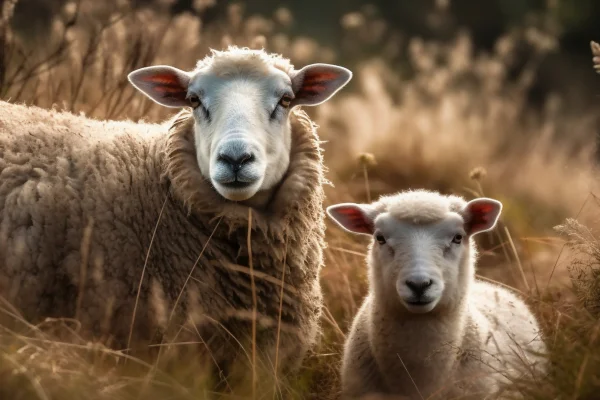
Reproductive and Metabolic Diseases in Sheep
Many reproductive and metabolic diseases in sheep are associated with abrupt changes in diet, unbalanced diets with nutritional and vitamin deficiencies, as well as exposure to toxic substances that result in imbalances in the gastrointestinal bacterial flora. In addition, the critical stages of pregnancy, childbirth and lactation can trigger these conditions. Common symptoms, which vary in severity, include neurological changes such as apathy, weakness or head tilt, gastrointestinal disorders such as diarrhea or loss of appetite, and muscle weakness.
-
Pregnancy Toxemia (Ketosis)
Pregnancy toxemia, known as ketosis, affects ewes in the final third of pregnancy. An inadequate diet can lead to a lack of glucose for the fetus, resulting in weakness in the mother. To obtain additional energy, the ewe's body uses fat as an energy source, overloading the liver and forming ketone bodies, which affect the central nervous system. Symptoms include isolationist behavior, teeth grinding, moving in circles, blindness and the smell of acetone on the breath. Unfortunately, the disease has no cure, and the sheep dies quickly, usually between 12 and 26 hours after the onset of symptoms.
-
Hypocalcemia
Hypocalcemia is a syndrome associated with calcium deficiency in ewes in late pregnancy or early lactation. Various environmental factors and genetic predispositions can influence its development. Clinical signs include staggering gait and tremors. Without treatment and calcium supplementation, the ewe may die between 6 and 12 hours after the onset of symptoms.
-
Tingling
Tympanism is a metabolic disease characterized by obvious distension of the left flank, where the rumen and reticulum are located. This occurs due to the inability to eliminate the gases produced during rumen fermentation, usually caused by poorly selected diets or physical obstructions. An animal with tympanism suffers great pain and discomfort, becomes agitated and stops eating. If not treated quickly, the animal can collapse and die within a few hours. Treatment involves removing excess air from the animal's digestive tract, medication and modifying the diet, avoiding diets high in grains and low in fiber. In the event of bloating, it is crucial to call a vet as soon as possible.
-
Mastitis
Mastitis is a disease that can be caused by various agents, including Mannheimia haemolytica, Staphylococcus aureus, Escherichia coli, Corynebacterium spp. and Clostridium spp. These bacteria can be present in the mammary gland and teats, causing inflammation, swelling and redness in the udder, as well as the presence of lumps in the milk.
Mastitis can be caused by infection or a lack of proper hygiene. There are two types of mastitis: clinical, with visible symptoms and more common at the beginning of lactation, and subclinical, which manifests itself through reduced milk production and an increase in somatic cells in the milk. Treatment with antibiotics and proper hygiene is essential in order to prevent the development of chronic mastitis and guarantee the quality of the milk, respecting the antibiotic's grace period to avoid its presence in the milk.
-
Brucellosis
Brucellosis is a serious zoonosis that can cause abortions in various animal species, including goats, cattle, pigs, horses, dogs and humans. In females pregnant for the first time, abortions are common, while in females that have already had offspring, abortions may not be evident, but the offspring may be born weak. Males can also be affected, showing inflammation of the testicles, which reduces their reproductive capacity.
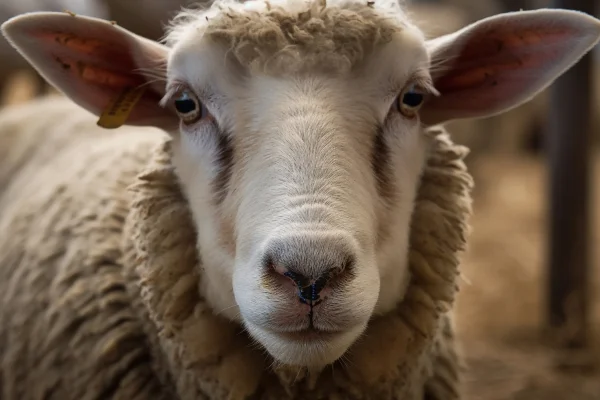
Neurological and Muscular Diseases
Neurological and Muscular Diseases in Sheep
The health of sheep is essential for the productivity and well-being of the flock. However, some neurological and muscular diseases can affect these animals, resulting in symptoms ranging from motor incoordination, tremors, convulsions to paralysis of the muscles, especially the respiratory muscles, which can lead to the animals' death.
Many of these diseases can be prevented by prior vaccination.
We highlight the following conditions:
-
Tetanus
Tetanus is caused by the neurotoxin produced by the bacterium Clostridium tetani. This neurological disease can result in muscle stiffness, spasms and difficulty walking. Vaccination is essential to prevent tetanus in sheep.
-
Botulism
Botulism is caused by ingesting the toxin produced by the bacterium Clostridium botulinum. Symptoms include muscle weakness, difficulty swallowing and paralysis. Prevention is achieved through proper dietary management and vaccination.
-
Cenurosis
Cenurosis is caused by the parasite Taenia multiceps, which affects the central nervous system of sheep. Symptoms include imbalance, convulsions and other neurological disorders. Prevention involves controlling intermediate parasites.
-
Anger
Rabies is a viral disease that can affect the central nervous system of sheep. Signs include agitation, aggression and paralysis. Proper management and prevention of bat bites are important measures to avoid rabies.
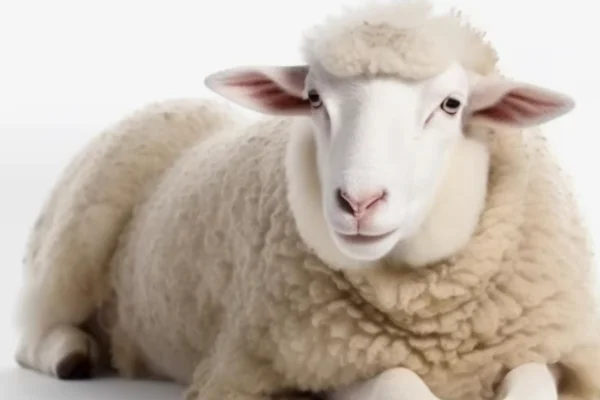
Respiratory Diseases
Respiratory diseases represent a significant challenge for the management of sheep of all ages, breeds and genders. Many of them result from the interaction of various factors and agents, such as bacteria, viruses and parasites, which, under favorable environmental conditions, can cause high mortality and economic losses.
One of the most common respiratory diseases is pasteurellosis, which causes pneumonia in sheep, with symptoms such as difficulty breathing, coughing and fever. Treatment with antibiotics, mainly tetracyclines, is often necessary.
Vermin
Worms caused by internal parasites (endoparasites) are responsible for significant economic losses in sheep production. Affected animals suffer from gastrointestinal disorders, weight loss, apathy and reduced productivity. Some of the common worms include helminthiasis, coccidiosis (or eimeriosis), hydatidosis and cysticercosis. Controlling these parasites and adopting appropriate management measures are fundamental to preventing and treating worms in sheep.
Diagnosing all of these diseases requires gathering information about the farm environment, the health conditions of the herd and observing clinical symptoms in the animals. When necessary, laboratory tests such as blood tests and microscopic examinations can be carried out to identify the causative agents of the diseases. The veterinarian plays a crucial role in the suspicion, diagnosis and appropriate treatment of diseases in sheep.
It is important to emphasize the need to maintain hygienic facilities, quarantine newly acquired animals, apply antiparasitics regularly and vaccinate sheep against relevant diseases, always under the guidance of a veterinarian. Infectious diseases are particularly important as they can be transmitted between animals and, in some cases, affect humans. Therefore, when dealing with suspect animals, it is essential to adopt protective measures, such as wearing gloves, to avoid contamination.
Conclusion: Sheep diseases
Maintaining a healthy flock of sheep requires knowledge and ongoing care to prevent and treat diseases. This article has highlighted the main diseases affecting sheep, from hoof disorders to neurological diseases, and offered information on prevention and treatment. Farmers and animal health professionals should be aware of the health of their flocks and take proactive measures to ensure sheep welfare.
FAQs (Frequently Asked Questions)
What are the common signs of disease in sheep? Common signs include changes in behavior, appetite and physical appearance, as well as abnormal respiratory symptoms.
How can I prevent diseases in sheep? Prevention involves maintaining good hygiene, providing adequate nutrition and vaccinating against prevalent diseases.
Are there any vaccines available for sheep diseases? Yes, there are vaccines for diseases such as PPR and Enterotoxemia, offering effective prevention.
Can I treat sheep diseases at home? Treatment should always be supervised by a vet to ensure correct diagnosis and appropriate medication.
What is the most common mistake in sheep disease management? Delay in seeking veterinary care is a significant mistake. Early intervention is crucial for successful treatment.
How often should I schedule veterinary check-ups for my sheep? Regular check-ups every six months are advisable to detect and prevent diseases in their early stages.
Thanks for stopping by, check out our other work too
https://vettopbr.com/tosse-em-caes/
https://cuidar.petlove.com.br/

